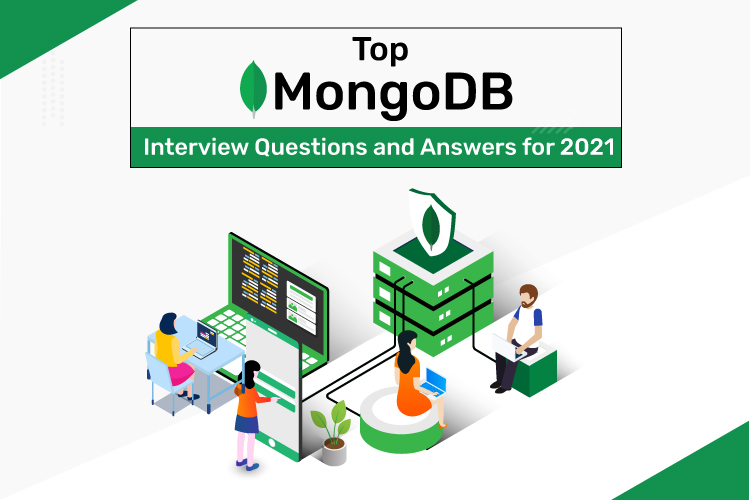- June 28, 2021
- nschool
- 0

Top MongoDB Interview Questions and Answers for 2021
MongoDB is a document database that allows you to store data in JSON documents. This MongoDB Interview Questions and Answers blog is dedicated to giving you a better understanding of the types of interview questions you might face. Recruiters typically begin by asking basic questions and gradually increase the complexity level of the questions as the interview progresses. As a result, our MongoDB Interview Questions blog has been created to meet the needs of the industry. Prepare for your MongoDB interview by reviewing the following questions and answers:
- Tell us about MongoDB?
- Key-value store NoSQL database
- Document store NoSQL database
- Column store NoSQL database
- Graph-based NoSQL database
- 4 bytes value indicating seconds(time)
- 3 bytes of machine identifier
- 2 bytes of process id
- 3 byte of the counter
>db.COLLECTION_NAME.find().sort({KEY:1})24. What is Auditing? Administrators can use auditing to make sure that the security controls in place are in control of the system’s behavior. 25. What does the dot notation mean in MongoDB? To access the items of an array and the fields of an embedded document, MongoDB employs the dot notation. 26. Which command is used to establish a database backup? The mongodump command is used to make a database backup. 27. Tell us about the covered query in MongoDB? If a query meets both of the above criteria, it is referred to as a covered query. The fields in the query are part of an index that the query uses. The fields in the results all belong to the same index. 28. Define the encryption at the application level. Within the application layer, application-level encryption provides encryption on a per-field or per-document basis. 29. In MongoDB, how can you set the cache size for WiredTiger? You can select the maximum size of the cache that WiredTiger will use for all data in the WiredTiger storage engine. The storage.wiredTiger.engineConfig.cacheSizeGB parameter can be used to do this. 30. What’s the difference between Cassandra and MongoDB? Cassandra is a high-performance distributed database system, while MongoDB is a cross-platform document-oriented database system. Cassandra is written in Java, while MongoDB is written in C++. In the event of a failure, MongoDB is simple to manage, whereas Cassandra delivers high availability with no single point of failure. 31. When it comes to concurrency, how does MongoDB handle it? For concurrency, MongoDB employs reader-writer locks. Reader-writer locks provide concurrent readers shared access to a resource, like a database or collection, but grant a single write operation exclusive access. 32. In MongoDB, what is the purpose of GridFS? GridFS is a file system that is used to store and retrieve huge items like audio, image, and video files. 33. What are the CRUD operations? CRUD Operations are,
- Create
- Read
- Update
- Delete
- Document-centric
- Exceptional performance
- Availability is high
- Scalability is simple.
- Language for complex queries

